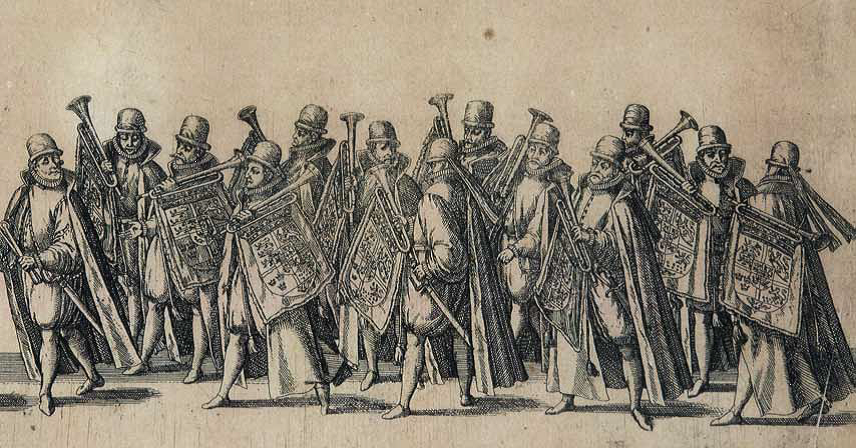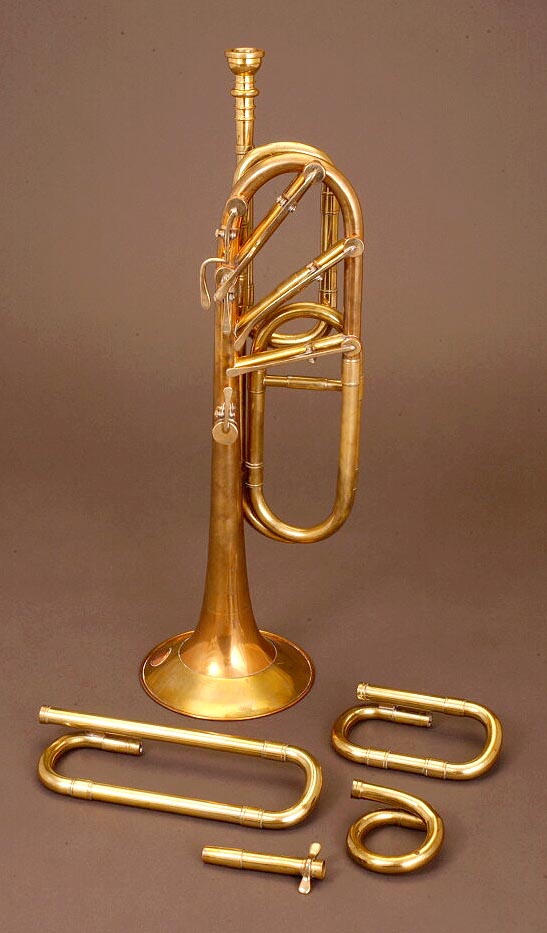DANISH BRASS 12

DANISH MUSIC FOR BRASS
Is a series of recordings with brass players from the Royal Danish Orchestra
as chamber music players or soloists
THE THREE CLASSIC TRUMPET CONCERTOS
by
JOHANN NEPOMUK HUMMEL
JOHANN BAPTIST GEORG NERUDA
JOSEPH HAYDN

PLAYED BY
KETIL CHRISTENSEN – TRUMPET
THE LIEPAJA SYMPHONY AMBER SOUND ORCHESTRA
CONDUCTED BY ATVARS LAKSTIGALA


FRENCH IMPERIAL GUARD TRUMPETERS
The National Gallery of Art in Washington, D.C. A detail of the painting by Theodore Gericault

JOHANN NEPOMUK HUMMEL
I – ALLEGRO
II – ANDANTE
III – ALLEGRO VIVACE

JOHANN BAPTIST GEORG NERUDA
I – ALLEGRO
II – LARGO
III – VIVACE

JOSEPH HAYDN
I – ALLEGRO
II – ANDANTE
III – ALLEGRO

THE ROYAL DANISH ORCHESTRA

The Royal Danish Orchestra’s emblem, the Royal Trumpeter Corps. Engraving from 1583. The Royal Danish Orchestra is the the world’s oldest orchestral institution. It started out 1448 as a trumpeter corps, and today it is an opera and symphony orchestra based at the Royal Opera in Copenhagen.


KETIL CHRISTENSEN studied at The Royal Danish Academy of Music with Kurt Petersen and became only 19 years old principal trumpet in The Royal Danish Orchestra. Co-founder of The Royal danish Orchestra Brass Ensemble and member of the chamber orchestra Collegium Musicum, Copenhagen. Has made many recordings and engagements as soloist. in 1980 he won a prize at the international competition for soloists in Munich and has later been a member of the jury at the same competition in 2018. Has been teaching trumpet at The royal Danish Academy of Music. The recipient of the Gade Scholarship and Gladsaxe Music Award.


ATVARS LAKSTIGALA

– has since 2010 been chief conductor and artistic leader of Liepaja Symphony Amber Sound Orchestra. He is an educated brass player, and further more he has an education as music director from the Latvian Music Academy and a musical candidate degree from Universität der künste in Berlin. From 1997-2010 he worked as a french horn player in Latvian National Opera. He is now a very successful conductor the same place. In 2010 he received the Latvian Culture ministry’s “The Latvian Great Music Award of 2010” – the greatest musical honor i Latvia – for his work with The Liepaja Symphony Amber Sound Orchestra.


THE LIEPAJA SYMPHONY AMBER SOUND ORCHESTRA

– was founded in 1881 as The Baltic Philharmonic and is the oldest orchestra in the Baltic States. It plays a significant role in the cultural life of Latvia, with regular performances in Latvian cities, as well as in Europe and Asia. The Liepaja Symphony Amber Sound Orchestra has won several prestigious awards, including the highest recognition of the Republic of Latvia – The Great Latvian Music Award.

ANTON WEIDINGER AND THE KEYED TRUMPET

KEYED TRUMPET

Around 1775 new attempts came up to build trumpets with holes, just like earlier in the renaissance when the Cornett ( the zink ) appeared, though this time with a key system to close the holes (like woodwind instruments). It was the Viennese court trumpeter Anton Weidinger (1767-1852) who developed a trumpet with 5 keys. He did not invent it, as some have believed, but developed his own instrument (Klappentrompete) that could play chromatically based on earlier examples of keyed trumpets. Weidinger’s teacher was Peter Neuhold Chief Court and Field Trumpeter (Oberhof und Feldtrompeter) in Vienna, a position Weidinger later would assume. First Weidinger was employed in the military, in 1792 he was In the Mannella Theater i Vienna and 1799 he joined the Imperial and Royal Court Trumpeter Corps (Hoftrompeterkorps).


ANTON WEIDINGER (1767-1852)

The keyed trumpet was pitched in G, and had extra tubes to obtain a lower pitch. Normally one should move the holes when changing the pitch by expanding the tube, (impossible of course) . To eliminate intonation problems the trumpeter could alter the fingering for different tuning. And it was a success, the keyed trumpet got a rather positive verdict! The brilliant trumpet sound was now supplied by a soft woodwind-like sound. Nowadays we know that the keyed trumpet at that time had a few defects, especially the holes were too small. The positive approach could be because of the ”ideal” sound of that era: They just did not expect an ”even” sound in all registers.
The keyed trumpet disappeared from the musical scene by the 1840s. During the 1820s the valve trumpet in the area around Vienna displaced the keyed trumpet. Only in Italy it found a temporary refuge in the operas of Rossini and Meyerbeer. The Italian brothers Alessandro and Antonio Gambati made a tour around Europe in the 1820s, as soloists on the instrument, and up till 1840 the keyed trumpet was used in military music in Austria and Italy. Although Weidinger, however, got some success and he toured in public halls throughout Germany, England and France. A German music newspaper raved: “The crescendo and decrescendo, the clear high register that penetrates to the very marrow, especially in those places where Mr. W. remained within the natural key of the instrument, are truly incomparable and in the literal sense of the word, unheard of.”


JOHANN NEPOMUK HUMMEL (1778 – 1837)

– was a Austrian composer and outstanding virtuoso pianist. He studied at an early age with Wolfgang Amadeus Mozart. Hummel was taught and housed by Mozart for two years free of charge and made his first concert appearance at the age of nine at one of Mozart’s concerts. Later, accompanied by his father, he toured Bohemia, Germany, Austria, Denmark, the Netherlands, and England for four years as a child-prodigy pianist. In England he studied a year with Clementi. Returning to Vienna in 1793, he took instruction from J.G. Albrechtsberger, Joseph Haydn (whom he had met in London), and Antonio Salieri. In 1804 -1811 Hummel became Konzertmeister to Prince Esterházy’s establishment at Eisenstadt. Although he had taken over many of the duties of Kapelmeister, because of Haydn’s bad health, he continued to be known simply as the Concertmeister out of respect to Hayd. He received the title of Kapellmeister, only after the older composer died in May 1809. After further successes as a pianist, conductor, and teacher, he became chapel master at Weimar (1818). Hummel’s most important compositions are his piano works, consisting of trios, sonatas, rondos, and six concerti, all elegant in style and virtuous in their melodic writing and ornamentation. Well suited to the light Viennese piano action of his day these works nevertheless lack the emotional depth evident in the works of Hummel’s great contemporary rival, Ludwig van Beethoven, with whom he maintained an uneasy friendship. (He was a pallbearer at Beethoven’s funeral.) Hummel also composed nine operas, three masses, a mandolin concerto, and chamber works, notably the Septet in D Minor. He made innovations in fingering methods, published in his Klavierschule (“Piano School”) in 1828.
By around 1803 Weidinger had succeeded in interesting Johann Nepomuk Hummel to write a piece for the keyed trumpet. It was written 1803 and his Concerto a tromba principale received its first performance at the Esterhazy court on 1 January 1804 to great acclaim. The concerto was marking Hummel’s entrance into the Esterházy court orchestra in 1804, following Haydn. The concerto is to day often played in the key of Eb Major but it was originally in the key of E Major ( this recording is in the original key – E major! ) Weidinger himself is believed to have reworked the piece, at least in part, in order to adapt the writing to the instrument’s technical capabilities. Hummel also wrote a Quartet for (keyed)trumpet, violin, cello and piano for Weidinger.


JOHANN BAPTIST GEORG NERUDA (c.1708 – c. 1780)

– was a classical Czech composer. Compared to other composers of the Classical music era Neruda is little known. He was born in Bohemia, now part of the Czech Republic, in a well-respected musical family. After spending his earlier years gaining a good reputation as a violinist and conductor in Prague and Germany, Neruda became Konzertmeister of the Dresden court Orchestra. His works includes eighteen symphonies, fourteen instrumental concertos (including a the trumpet concerto), sonatas, sacred works and an opera Les Troqueurs.
One of the composer’s more significant works is the Concerto in E-flat for Trumpet and Strings. Originally written for the “corno da caccia” (hunting horn) using only the high register, it is now rarely performed on anything other than an E-flat or B-flat trumpet.


LITTLE SIGNAL HUNTING HORN by Wolf Wilhelm Haas, Imperial City of Nürnberg, 1754-1759.
Maybe a kind of Corno da Caccia?


GOTTFRIED REICHE (1667 – 1734), BACH’s TRUMPET PLAYER IN LEIPZIG (1722 – 1734) WITH HIS COILED TRUMPET
Engraving (1727 ) after a painting by Gottlib Haussman.

Bach also wrote for Corno da Caccia (hunting horn) for parts which require the same virtuosity as the trumpet parts. There is no definitive definition of the Corno da Caccia instrument, but it has about half the length of the large hunting horn. Maybe Gottfried Reiche’s coiled trumpet is a Corno da Caccia?


JOSEPH HAYDN (1732 – 1809)
– was an Austrian composer. His contributions to musical form have earned him the epithets “Father of the Symphony” and “Father of the String Quartet”. Haydn spent much of his career as a court musician for the wealthy Eserhazy family at their remote estate. Until the later part of his life, this isolated him from other composers and trends in music so that he was, as he put it, “forced to become original”.[c]Yet his music circulated widely, and for much of his career he was the most celebrated composer in Europe. He was a friend and mentor of Mozart, a tutor of Beethoven and the older brother of composer Michael Haydn.
In 1796 Joseph Haydn wrote his Trumpet concerto for Anton Weidinger, both as an act of friendship as to his interest in the new keyed trumpet.The 28th of March 1800 the concerto was performed for the first time at the Imperial and Royal Burgtheater. Until then, Haydn’s writing for the trumpet had rarely risen above the level of providing harmonic support or underlining a particular Affect. Now he took a closer interest in the new potential of Weidingers organisirte Trompete (organized trumpet), writing a trumpet part for him that was totally unlike the traditionally type of writing with the instrument. In this concert , thrills, chromatic runs and diatonic melodies replaced the standard fanfare motifs. The Concerto disappeared together with the keyed trumpet (when in the 19th century it was superseded by the Valve Trumpet) but it reappeared again in 1908, and has been the uppermost favourite piece of trumpeters and the audience.



















